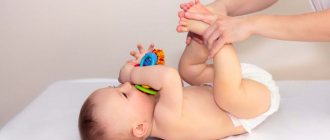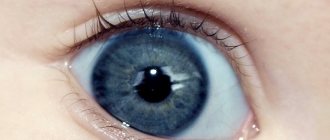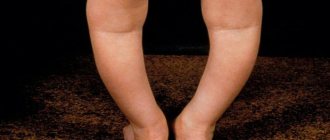Preparation for the procedure
To do this, you just need to carefully observe the child for some time and perform simple manipulations.
Perhaps the main signs indicating hypertonicity are restless behavior and nervousness ; when the baby cries, the chin trembles. Symptoms of increased muscle tone also include:
- Periodic intense regurgitation.
- Restless and short-term sleep, the child wakes up with the slightest noise.
- The characteristic positions that children take when sleeping are their heads thrown back, legs and arms connected. If you try to separate the limbs, with hypertonicity the baby will resist and may wake up and cry .
- The child throws his head back and arches his whole body when he cries.
You can carefully take the baby under the arms, lower his legs to the floor and tilt his torso slightly.
A child who feels well will place his entire foot on the floor, but with muscle hypertonicity he will touch the floor with his toe.
Similar reactions occur in completely healthy children, and only a pediatric neurologist can definitively diagnose hypertonicity.
Experts point to several possible causes of muscle tension: hemolytic disease of the baby, incompatibility of blood groups or Rh factors, malfunctions in the baby’s nervous system.
Pathologies of the nervous system, in turn, can be caused by:
- Chronic intoxication of a woman during pregnancy due to illness.
- Constant tension in the muscles of the uterus during pregnancy.
- In cases where pregnancy occurred simultaneously with treatment of acute infectious diseases.
- Threatened miscarriage, difficult pregnancy.
- Labor that is too long or too fast.
- Intense toxicosis in the first or last stages of pregnancy.
- Poisoning of the fetus as a result of smoking and drinking alcohol by a pregnant woman.
- Hypoxia of the child’s brain during childbirth or pregnancy.
- Chronic diseases of the mother.
- Improper execution of the incision during caesarean section.
Massage of a child with tone: video
Home » Children's massage » Massage of a child with tone: video
In medicine, there is the concept of muscle tone, which consists of small muscle tension present in a state of relaxation and calm.
When there is an impact from the outside, the muscles relax and tense. One of the reasons for such symptoms is mainly increased muscle tone in children, which manifests itself as a result of certain abnormalities. This increased tone is also called hypertonicity in medicine. The main method of treatment and prevention is massage of the child with tone .
Baby's tone.
When a child is born, he generally experiences an increase in tone. These are purely physiological signs that are associated with the fact that the baby has been in the mother’s tummy for a long time. While the baby is in the womb, his arms, legs, and chin are pressed tightly to the body. In this state, the fetal muscles are quite tense. And this happens throughout pregnancy.
When a child is born, it is necessary to carefully monitor the tone of his muscles. This is done from the first days of a newborn’s life. Right now you can notice all the anomalies that arise quite clearly. If measures are not taken in a timely manner, the result is that gait and alignment are impaired, and the child lags behind in the development of movements. Thus, the primary task of parents is to systematically observe and record all children's postures and movements. And you don’t have to wait until it’s time to visit a doctor. Muscle tone in children, its indicator is not only the basis of various movements. This indicator reflects the holistic condition of the child, as well as his nervous system.
Muscle hypertonicity.
With hypertonicity, the child experiences frequent hysterics, is restless, and has disturbed sleep. Every sound and bright lighting has an irritating effect on him. Since the occipital muscles are tense, the child holds his head well even at birth. The baby's legs and arms are constantly tightening, as if he is trying to bring them together. And when you want to separate them, there is a feeling of resistance. To accurately determine the pathology associated with the nerves, you should once again spread the baby’s legs. If he resists strongly, therefore, there is muscle hypertonicity. Also, a distinctive feature of hypertonicity is pressing the fingers and the desire to rise on the tiptoes. All this affects the baby’s spine and gait in the future. It is quite common to observe tense neck muscles, resulting in tension in the head and back. As a result, the brain structures are very active, intracranial pressure increases, and the child is very excited. Until six months, hypertonicity is not dangerous, it’s just physiology.
Tone in the legs.
Hypertonicity is mainly noticed in the baby’s legs and arms. To check the tone in the legs, the child is taken under the arms and placed on his feet, slightly tilted forward. The baby must be placed on a flat surface. The child begins to stomp like an adult. If there is tone, the baby stands on tiptoes.
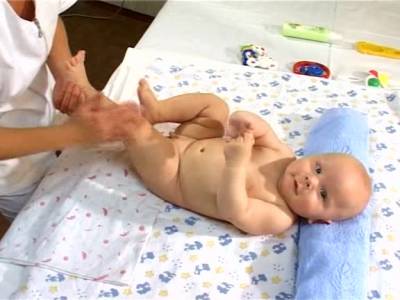
If there is tone in the hips, then when spreading the legs to the sides, strong resistance is felt. If the child is healthy, then there is no reaction from him to such actions; he freely allows all this to be done. If such signs persist even after six months, it is recommended to contact a neurologist and pediatrician.
Massage for a child for muscle tone
To get rid of the manifestations of increased muscle tone, you need to do a special massage that relaxes the muscle tissue.
The environment should be comfortable:
- Ventilated room;
- Massage table;
- Clean hands;
- The procedure is performed after eating 40 minutes;
- It is advisable to use powder or cream;
- The child should be in a calm state;
- The massage is done for five minutes, and after three months it increases to ten minutes.
The massage technique includes muscle relaxation.
Main techniques in massage:
- Stroking movements to relieve tension and improve blood circulation.
- Hand massage is performed alternately.
- Foot massage is performed while lying down, as the legs rise and fall.
There are also certain techniques that massage therapists perform. Using them, increased muscle tone is relieved and pathologies do not develop.
Category: Baby massage | Author: Pediatrician
Therapeutic massage for hypertension
Hypertonicity is usually diagnosed in children of one month of age. Only in the most severe cases do doctors prescribe drug treatment; the most common prescriptions are physiotherapy, therapeutic massage and therapeutic exercises.
The ultimate goal of all procedures is to relieve muscle tension and completely relax the muscles. It is advisable to carry out the first course of therapeutic massage with the involvement of specialists (or at least under their supervision).
Foot massage
- It starts with the child's left leg. With your left hand we hold the ankle joint, placing it between the index and middle fingers.
- At this time, we massage with our right hand, starting stroking movements from the foot. We gradually rise to the lower leg, massage the side, then the front part of the thigh. After massaging the thighs, massage the groin area for two to three minutes. Then we start all over again, from the foot. We repeat stroking the child’s feet 7-10 times.
- After stroking, we begin rubbing the same areas. Rub with fingertips, spiral and straight movements from bottom to top and vice versa.
- Then gently knead the same area by pressing.
- We massage the foot, stroking it and moving from the toes to the heel. Gently press the area of the foot under the middle finger with your index finger and move along the outer arch. Usually, this will straighten the baby’s fingers; this exercise should be repeated 5-7 times.
- We rub the child’s foot with our thumb, drawing a figure eight.
- We knead the foot with gentle pressure from the thumb.
- We stroke the outer side of the foot from the toes to the ankle with the middle and index fingers.
- We rub the same area with various movements: straight, spiral, etc.
After completing a set of exercises, we take the child’s leg with our right hand. In this case, the big toe should be on the inside of the foot (under the toes), and the rest on its outside.
With our left hand we fix the baby’s knee and bend and unbend the baby’s leg 5-6 times so that the knee and hip joints work. Children have problems with hip joints, how to deal with dysplasia with massage and gymnastics.
The child’s right leg is massaged in the same order. After you have finished massaging your legs, you need to bend them several times, holding your knees and slightly pressing on your stomach.
Then the knees need to be spread apart, while the feet should remain together. We make several smooth movements, rubbing the child’s feet against each other.
Buttocks and back massage
After massage exercises on the legs, we begin to massage the back. We turn the child onto his stomach.
Rub and knead the skin with light movements of your fingers. Then we stroke the back, starting from the neck and going down to the lower back.
We rub and knead the gluteal muscles; light pressure and pinching are recommended. Very carefully, without causing pain to the child .
Breast massage
We turn the child onto his back again and stroke his stomach with light movements in a clockwise direction.
Then we stroke the chest, from the sternum to the armpits, using light rubbing movements of the fingers. Tap the ribs very lightly with your fingers.
Hand massage
We begin the massage by rubbing, warming up and stroking the outer part of the child’s left arm. With your left hand, we fix the child’s left arm so that your thumb is clamped in the child’s fist.
With our right hand we stroke the baby's hand from top to bottom and at the same time rub it, making smooth multidirectional movements with our fingers.
The external muscles of the arms in children are weakened; they should be massaged using vibration movements and pressure.
On the contrary, the internal muscles (flexors) are tense and should be relaxed as much as possible using stroking and light rubbing movements in a circle. We repeat the same for the right hand.
Then we begin to do the following exercises:
- We spread the baby's arms to the sides, then cross them on the chest.
- We raise the handles up one by one. Then we raise both arms at the same time.
- Shake the hands separately and together.
- Rotate each handle back and forth relative to the shoulder girdle.
All these exercises should be repeated 5-7 times. The massage should take about half an hour .
It should be done once a day or several times a day, but at a lower intensity (7-10 minutes).
Massage technique for hypertonicity of leg muscles
If you have hypertonicity, you should relax your muscles as much as possible. To do this, use rollers under the ankle and knee joints. Regardless of the cause of hypertonicity, the massage begins with general stroking of a continuous limb.
For each specific disease, massage should be approached individually. In the first sessions, patients after a stroke undergo only superficial stroking and rubbing. In subsequent sessions, differentiated massage is performed.
Begin the foot massage with stretched muscles, then treat muscles with high tone. Muscles in which the tone is increased (extensors) are massaged using relaxing techniques. Apply superficial stroking and rubbing, as well as deep kneading. The flexor muscles are stretched and atrophied. They are massaged more intensely.
With a diffuse increase in the tone of both muscle groups, a relaxing massage of the entire limb is performed. The technique includes treatment of the lumbar region and gluteal muscles. Painful muscle tightness causes discomfort to the patient. If the massage is well tolerated, the technique includes felting and deep kneading. Avoid shock stimulating techniques.
Hypertonicity of the legs, which appears as a result of overwork or cooling of the limb, manifests itself as a cramp. Applying pressure to the greater trochanter of the femur and the back of the thigh relieves soreness and muscle tension. The points are treated on the lateral surfaces of the shin towards the ankle.
If the patient is in bed for a very long time, his foot is fixed in an extended position. This creates muscle tension. The massage therapist should definitely pay attention to this and relax the muscles of the lower leg and foot in time, including passive movements in the knee and ankle joint in the technique.
The technique for increased leg muscle tone includes post-isometric relaxation techniques that improve muscle elasticity. According to indications, warm salt baths and paraffin applications are used before each massage session.
Gymnastics for hypertension in infants
With increased muscle tension, therapeutic exercises are just as necessary as massage and no less effective. Some exercises:
- Wiggle . This exercise can be done by holding the child under the arms and gently rocking him. It can be performed in both vertical and horizontal positions. It is recommended to do it in water when the child is washed in the bath.
- On the ball . Placing the baby with his stomach on the ball and holding him by the legs and back, gently rock him in different directions. Movements should be very smooth. When your child gets used to this exercise, try stretching his arms forward a little.
- Flexion and extension of the arms . These exercises need to be done in all possible positions - placing the baby on his stomach or on his side (we move the bent arms left and right, back and forth) or on his back (straightened arms are spread to the sides, crossed, raised up, rotational movements are made).
- Crawling . The child himself does not yet know how to crawl, but by placing him on his stomach and helping him move his arms and legs, you are thereby performing an effective gymnastic exercise.
- Spreading the legs to the side . You will most likely encounter resistance from the child, so this exercise should be done very carefully, without being too persistent.
Gymnastics will also benefit a completely healthy baby.
Cough massage for children as an effective method of sputum removal.
Read all about the technique and benefits of vibration massage for coughs for children here: https://vsetelo.com/dt-bolezni/kashel/vibracionnyj-massazh.html
Breathing massage for flexor hypertonicity
The child should lie on his back with his legs facing the massage therapist:
- using the palmar surface of the hand, they stroke the anterolateral surface of the chest, the oblique abdominal muscles, bypassing the cartilaginous zone;
- They stroke the intercostal spaces of the oblique and rectus abdominal muscles, and the muscles along the colon. The techniques are alternated 2-3 times;
- lay the child on his stomach and begin to stroke and rub the trapezius muscles along the way;
- Place the child on his back and stroke the chest and oblique abdominal muscles.
Relaxing breathing massage is alternated with gymnastics - passive flexion and extension of arms and legs, reflex extension of the spine in a position on the side (right and left), reflex movements of the feet when pressing the feet with fingers from toes to heel, reflex movement of the head and crawling in a position on the stomach .
Baby massage at the age of 3 months
Baby massage at the age of 3 months with residual hypertonicity should be done according to the method described above and press with a finger at the base of the phalanges for reflex flexion, and also stroke from the toes to the heel along the outer part of the foot.
It is useful to do:
- stroke the baby’s buttocks with your palm 6-8 times, holding the shins or thighs with your other hand;
- arch your back;
- lift 2-4 times, placing one hand under the chest, the other - grab both legs in the ankle area. At the same time, the baby’s back will also reflexively bend.
Baby massage at the age of 4 months
Baby massage at the age of 4 months with the presence of residual hypertonicity is performed with stroking and rubbing movements. The child is held with one hand, and a spiral massage is performed with the other hand (4-6 times):
- along the shoulder, its outer surface;
- along the feet and from the foot up the lower leg and thigh.
The massage is combined with raising the legs: grasping the legs in the area of the calf muscles, alternately raising and lowering the straightened legs.
Abdominal massage is performed according to the method described above.
Children's general relaxing massage
In order to bring the baby's muscle tone back to normal and help the natural development of the entire musculoskeletal system, you should do a relaxing massage daily.
First, we massage the child’s feet, stroking and moving from the heel to the toes.
We move on to stroking the baby’s legs; from the shin we rise to the thigh, massage the thigh with smooth circular movements of the fingers. We massage the baby’s second leg in the same way.
The next stage is a shoulder and chest massage. With light stroking movements we massage the shoulders, then the chest, lower ourselves onto the left hand, massage it. Then the right one.
After we have relaxed the arm muscles, we massage the stomach: we stroke it with light pressure, moving clockwise around the navel.
Then we do a light acupressure facial massage. Using your fingertips, knead the skin on your face from the middle of your forehead to the corners of your lips.
Relaxing massage
For hypertonicity of the muscles of the legs and arms, a massage complex is indicated even in the first month of life, but its implementation should be entrusted to a specialist familiar with the techniques and features of working with the youngest patients.
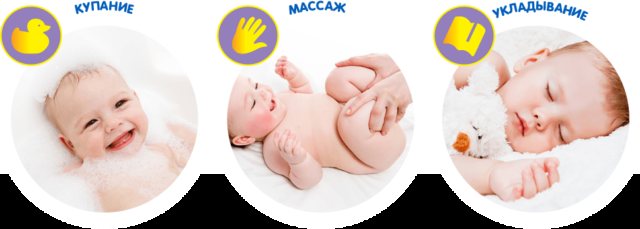
The rules for massage for newborns with severe hypertonicity include working with each muscle, taking into account its location and functions, as well as dynamic monitoring by the attending physician with possible course correction. If hypertension occurs due to neurological problems, massage is combined with drug treatment, electrophoresis, paraffin wraps, therapeutic swimming and relaxing baths. In other cases, any careful and attentive person can cope with a relaxing massage.
Preparation
Recommendations and rules for massage also apply to preparation. For the complex to be effective, you need to take care not only of the correct algorithm of movements, but also of creating a peaceful environment for a relaxing massage:
- Doctors recommend carrying out the procedure every day at the same hours; it is best to schedule the time during daylight hours, half an hour after meals and half an hour to an hour before bedtime.
- The surface on which the massage is performed should be spacious enough, warm and pleasant to the touch. The table should be covered with a blanket folded several times, an oilcloth and a large soft diaper should be placed on top of it.
- The room should be well ventilated, without drafts, air temperature – 21-25, humidity – 50-70%.
- Play calm classical music quietly and, if possible, remove sources of bright light and annoying noise.
Massage should be done with warm hands lubricated with massage oil. It is best to use olive oil, petroleum jelly, or grapeseed oil to reduce the risk of allergies.
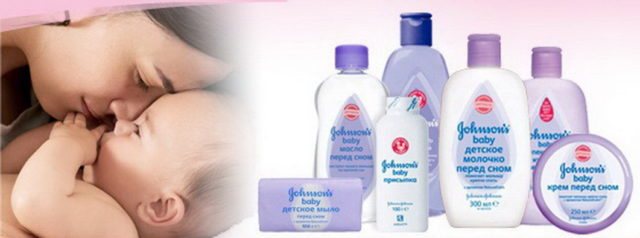
Step-by-step instruction
We begin the massage with wide, slow stroking of the child’s legs and arms. Remember that a relaxing massage for a baby is necessary not only for physical, but also for mental development, therefore, while touching, you can and should talk to him, name parts of the body, if possible, look him in the eyes and smile.
Read also…. How to choose a vibrating body massager
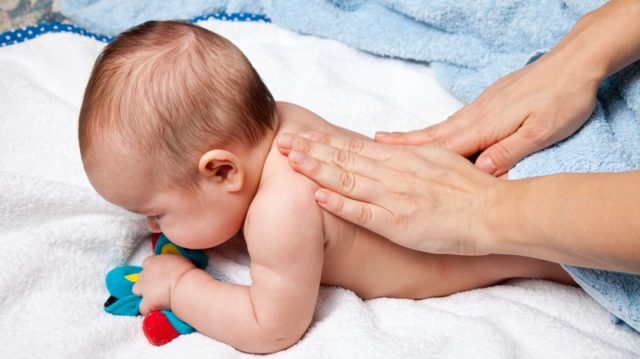
After stroking, proceed to the following elements:
- Using gentle stroking movements, massage the child's face, moving from the forehead through the cheekbones to the chin. Lightly rub your earlobes;
- Stroke your belly clockwise;
- Cross your baby's arms over your chest, then spread them apart. Repeat 5-7 times;
- Pull the baby's legs towards the stomach, bending them at the knees, then straighten them. This exercise must be repeated 5-7 times, overcoming resistance smoothly, with minimal pressure;
- Turn the baby onto his tummy. Tap your fingertips over the entire surface of your back and buttocks, trying to ensure that the muscles are in a relaxed state by the time you begin performing the next element;
- Using your thumbs, massage the areas along the spine, moving up and down several times. Avoid applying strong pressure during this procedure;
- Do light vibrating shaking, placing your palms first on your shoulders, then on your back, buttocks and arms;
- Stretch your foot, then lightly massage your baby's legs one at a time, grasping them with both hands.
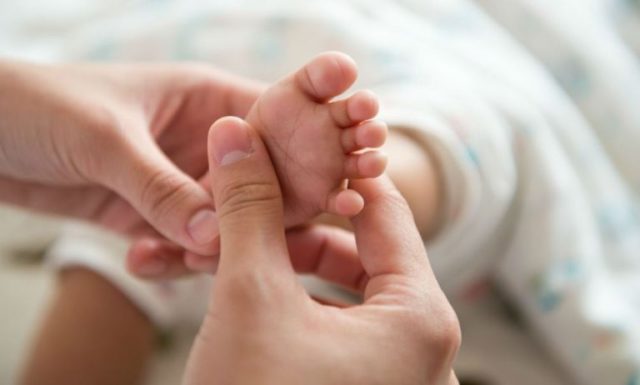
The entire soothing massage procedure before bed should take no more than 15 minutes for children in the first months of life and no more than half an hour for toddlers older than six months. After finishing the exercises, let your child play for a few minutes.
About pathology
The concept of “muscular dystonia” itself is quite broad. It refers to any violation of muscle tone. In newborns, the tone is usually increased and hypertonicity is observed. This condition during the first months can be considered physiological, because in the last months of pregnancy the mother’s womb was crowded. With hypertonicity, it is difficult to straighten the arms and legs; the baby sometimes keeps his fists tightly clenched even in his sleep.
Another manifestation of muscular dystonia is hypotonia. This is a condition in which muscle tone is insufficient for normal motor activity. This condition is quite often observed in premature babies, in children born low birth weight and very weak. Also, hypotonicity can replace hypertonicity after six months of a child’s life, if in the first six months his muscles did not experience the load necessary for normal development or the child was sick and weakened for a long time.
In addition, the concept of “muscular dystonia” includes conditions in which the child’s muscles contract uncontrollably. This can be caused by both congenital pathologies of the central nervous system and birth injuries. Thus, dystonia in an infant can have both a physiological mechanism of development and a pathogenic one (due to diseases).
Tone or hypotonicity can manifest itself either in an individual muscle or muscle group or in a generalized manner. If a neurologist and pediatrician claim that a child has dystonia, they must discover its cause, because pathological muscular dystonia requires a slightly different approach to treatment. Although in both cases the basis will still be gymnastics, massage and physiotherapy.
In 95% of cases of muscular dystonia detected in newborns, the causes are physiological. After six months, pathology is rarely diagnosed for the first time, but if this happens, then usually its causes are pathological.
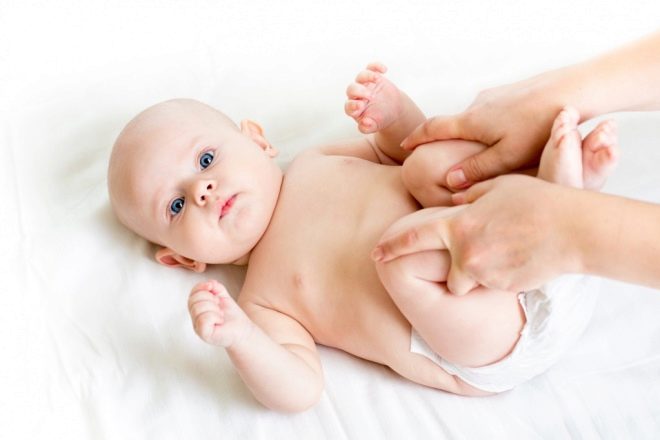
Benefits of classes
Massage and gymnastics in combination have the most beneficial effect. In this case, the lesson always begins with performing massage techniques, and only then should one move on to gymnastic exercises. Depending on the type of dystonia (hypertonicity or hypotonicity), either a relaxing or tonic and restorative children's massage and an appropriate set of exercises from the arsenal of physical therapy are prescribed.
Exercising with a child allows you to relieve increased muscle tone due to hypertonicity and relax muscle tissue. The relaxing effect will be not only muscular, but also general, having a beneficial effect on the general well-being of the child - sleep and appetite will improve, the baby will become calmer. With muscular dystonia, a type of decreased tone, muscle blood circulation improves, muscle tissue strengthens, and metabolic processes accelerate.
Gymnastics helps to consolidate the correct state of muscle tone at the level of neural memory - the muscles of the baby’s legs and arms, his back, abdomen, and collar area “remember” the correct position in a state of rest and activity.
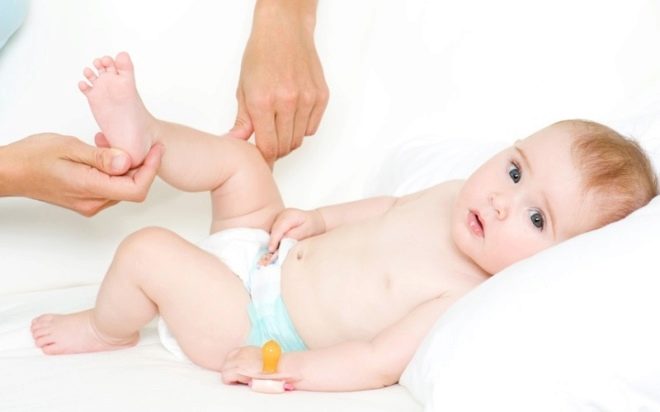
It is very important to relieve increased tone or improve decreased tone as early as possible. Children with muscular dystonia develop physically more slowly, it is more difficult for them to acquire new skills - they are delayed in mastering crawling, sitting, standing, and independent steps. Delayed physical development can also lead to delayed mental and emotional development.
Indications and contraindications
A relaxing massage for infants is indicated even for completely healthy children. This is a good way for an infant to interact with a significant adult and become aware of the boundaries of their body. But there are a number of direct indications, including:
- a lag in physical and emotional development of more than a month from the recommended norms;
- problems with the digestive tract, weak peristalsis;
- chronic respiratory diseases outside the period of exacerbation, incl. chronic bronchitis, bronchial asthma.

Before deciding on a course of procedures, it is necessary to take into account contraindications. You should refrain from massage in the following cases:
- acute respiratory diseases;
- three to four days after vaccination and one to two days before it;
- any diseases accompanied by purulent processes;
- severe diseases: heart defects in the stage of decompensation, tuberculosis of the lungs or bones, acute arthritis, hemophilia;
- increased body temperature and enlarged lymph nodes of any origin;
- low body weight;
- congenital or acquired hernias;
- age up to 1 month. For newborn babies, it is better to replace a relaxing massage with simple strokes.
Read also….
Technique for performing oriental massage It is also recommended to postpone the course if the baby has recently experienced a significant change of environment - moving), separation from a significant adult, introduction of complementary foods or cessation of breastfeeding, even if he does not show anxiety.
How to do?
For hypertonicity and hypotonicity, the massage begins in the same way - there will be fundamental differences at the end of the procedure.
Place the baby on his back. With hands moistened with oil or cream, begin with general strokes. The direction of hand movements is from bottom to top.
The hands and feet are massaged first. First, lightly rub your fingers and palms, then move on to your arms and forearm. After light circular and wavy rubbing, you can apply rubbing with light pressure. Make sure that the child is not in pain. The armpits cannot be massaged. Leg massage begins with the foot; by analogy with the arms, the lower limbs are massaged from the bottom up, avoiding touching the popliteal hollows. The knee joint is not massaged, but only lightly stroked with fingers in a circle without pressure.
The chest and abdomen are massaged with an open palm, in circular and coil-like movements. At 3 months, you can add to these techniques light stroking movements in the collar area and neck.
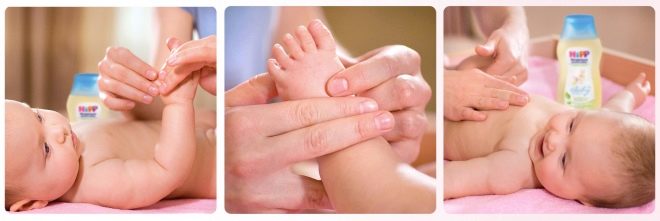
Place the baby on his stomach. Massage your back with your palms and the backs of them, rubbing from bottom to top. Pressure and impact on the vertebrae, lower back and cervical vertebrae should be avoided. If you have hypertonicity, pay attention to massage your shins and the back of your forearms. From 3-4 months, it is permissible to knead the muscles by grasping them with your fingers and slightly stretching them. Patting and pinching are useful for hypotonicity.
Return the child to his back, perform general stroking movements with your hands to relax after the procedure and proceed to gymnastics.
The massage technique is quite simple. The difference between a tonic and relaxing effect is a deeper effect on the muscles with reduced tone. You can use rubbing with the ribs of your palms (the so-called sawing), deep kneading, the main thing is to carry out such techniques at the very end of the session, when the muscles are sufficiently warmed up and the blood supply has increased.
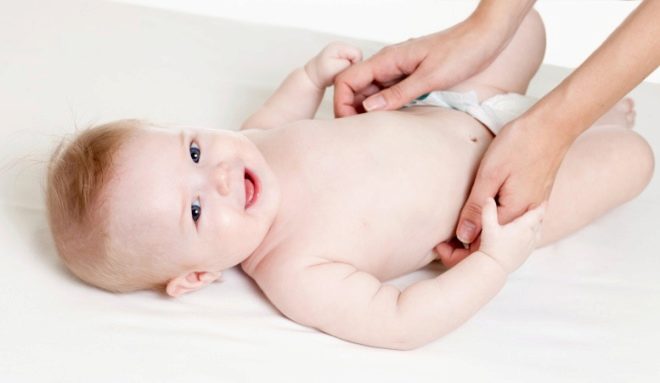
If desired, you can supplement the gymnastics with elements of acupressure, for example, massage the head (avoiding the fontanelles) with your fingertips, as well as massage the feet with a circular finger effect on the instep of the foot, on the base of the metatarsal bones, on the transition of the heel to the ankle.
Increase the session time gradually, do not rush, add 1-2 minutes daily. If at the very beginning the session lasts 3-4 minutes, then after a month its duration will increase to 10-15 minutes.
Gymnastic exercises
All gymnastic exercises for infants are divided into passive and active. The first involves performing exercises on a lying baby, while the second involves the direct participation of the baby himself in performing the exercise.
If you have hypertonicity, try to do more passive gymnastic exercises; if you have insufficient muscle tone, try to strain them to a greater extent, organizing active exercises for your baby using his age-specific skills and abilities. According to the general rule of physical therapy, active exercises are started only after a passive set of exercises.
If you have increased tone, do exercises to stretch your muscles and increase their elasticity. These include:
- lifting arms and legs up;
- spreading the legs to the sides;
- bringing the legs to the stomach synchronously or alternately (“bicycle”);
- laying on the tummy.
For muscle dystonia of the type of decreased tone, in addition to the exercises listed above, invite the child to do what he can do according to his age:
- at 2-3 months, lying on the stomach, watch the toy, reach for it;
- at 4-5 months, roll over onto your side and back from a position on your stomach, following the toy;
- at six months, sit the baby down;
- at any age, encourage and stimulate crawling movements;
- at 10-12 months, bend over with the baby to pick up a toy, take the first steps with support if the baby is not walking yet.
Exercises on a fitball are acceptable for children of any age, excluding newborns. This complex belongs to dynamic gymnastics. Ask your doctor if your baby can exercise on a gymnastic ball, since dynamic techniques have a larger list of contraindications than general gymnastics.
General rules
To achieve the desired result, it is important to make the classes systematic. Following simple rules will help improve muscle tone and make it enjoyable for everyone:
- Maintain the optimal temperature and humidity in the room where classes take place (temperature no higher than 21 degrees, humidity 50-70%). Be sure to ventilate the room before the massage. In the summer, if possible, conduct classes outside.
- Use a changing table for massage, but if you don't have one, you can do the session on a regular table or even on the top of a dresser. There is only one requirement - the surface should not be soft and uneven.
- Use only hypoallergenic oils or baby cream for massage.
You can use vegetable oil, but after it the child must be bathed to remove the thin airtight oily layer from the skin.

- Carry out any activity in a playful way - this applies to massage and gymnastics. If the child is uninterested and unhappy, he will very quickly make it clear that he is pretty tired of everything that is happening, will begin to be capricious and will have to interrupt the lesson. Remember that massage and gymnastics are a reason for communication, which should develop not only the body, but also the psyche of the little one, as well as his emotional sphere.
- Remember safety. Always place everything you need nearby so as not to leave your baby alone on the table, from which a fall could cause injury.
- Conduct classes an hour after meals to avoid regurgitation, and no later than an hour before going to bed. Toning massage is not done at night.
Symptoms of increased leg tone
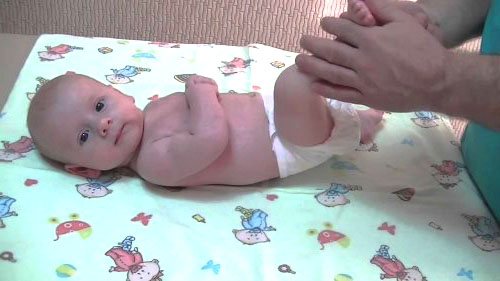
For an accurate diagnosis, consult your pediatrician. It is not difficult to recognize hypertension at an early age. Every mother can do this based on visual signs. There are several main symptoms:
- Strong crying and constant restlessness of the baby.
- Lack of restful sleep. Each time the child tries to assume the fetal position. Cries often.
- After each feeding the baby spits up.
- The baby constantly tightens his legs.
- A sharp reaction to any sounds or bright light.
- When you try to move your legs to the side, you feel significant resistance.
If symptoms are detected, you should immediately begin a course of massage to tone the legs in children.
If you are not sure that you have correctly identified your baby's condition, consult your pediatrician.
Hypertension must be treated. It not only causes suffering to the baby, but also inhibits the development of his musculoskeletal system. Children with this diagnosis begin to crawl and walk much later than their peers.
Sleep after massage
Throughout the course, you need to monitor the state of the baby’s nervous system: if the child does not sleep well at night after a massage, the intensity of the exercises should be reduced. In this case, it is useful to bathe the baby in a bath with the addition of chamomile decoction before going to bed. If, in your opinion, the child sleeps for too long after the procedure, you need to consult a pediatrician. Most likely, this is a variant of the norm - the baby needs not only to recover from stress, but also to absorb new impressions in his mind.
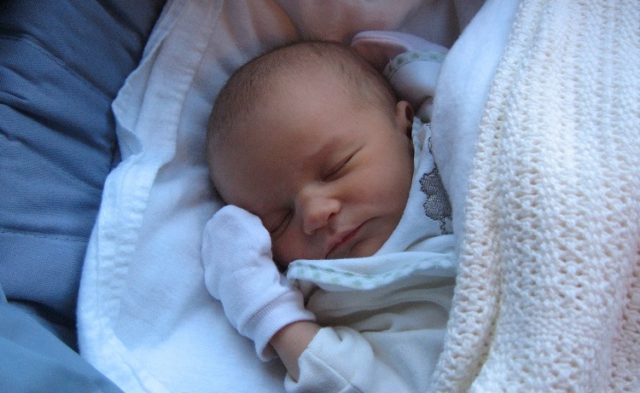
Giving a massage to a newborn is one of those pleasant chores that fill the life of parents of a baby. Considering all the features of a relaxing massage for various problems, you can help your child overcome them, enjoying not only the result, but also the process itself.
Read also…. Choosing oil for facial massage
Basic recommendations and preparation for massage
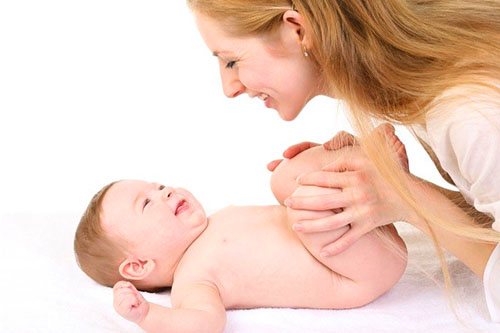
The session can only be carried out if the baby is relatively calm. If he is too capricious, then a positive effect will not be achieved. In this case, it is better to postpone the procedure to another time. During a baby massage for hypertonicity, adhere to the following recommendations:
- Before the session, it is necessary to create a comfortable atmosphere in the room. The room temperature must be maintained at 23 degrees at all times. Make sure there are no drafts. Eliminate all unpleasant odors and loud sounds.
- Prepare the area for the massage. It is best to use a special table. If it is not there, you can carry out the procedure on a changing table. Cover it with a blanket. Place an oilcloth on top and cover it with a clean, hot ironed diaper.
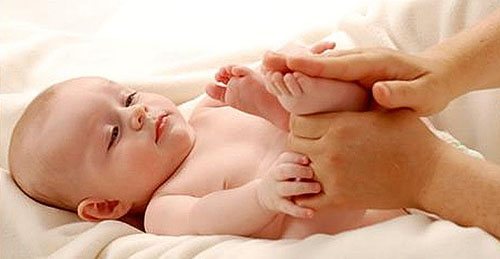
- Wash your hands thoroughly. They should not be wearing rings or bracelets. Keep your nails trimmed, as their sharp edges can hurt your baby's delicate skin.
- It is recommended to carry out the procedure on an empty stomach. Wait at least 45 minutes after feeding. You should also not feed the baby immediately after the session. Let it rest for at least an hour.
- To tone the legs of children, massage should be done on clean, dry skin. Do not use petroleum jelly, cream or powder. Give your skin the opportunity to breathe fully.
- During the procedure, make all movements in the direction from the feet to the groin area. Make sure your actions are as smooth and gentle as possible. Any too much pressure may cause injury.
If these recommendations are followed, the session will be as comfortable as possible for the baby and will benefit his health.
The duration of the session for infants should not exceed five minutes. At an older age, you need to massage your legs for ten minutes.
To successfully cure hypertension, ten sessions are enough. After six months, the course can be repeated.
Massage for hypertonic legs in infants
After the appearance of alarming symptoms for any parent associated with stiffness, regurgitation of ingested food and poor flexion and extension of the baby’s body, increased muscle tone, or hypertonicity, is quickly identified, which cannot be ignored.
It most often appears in the legs - the limbs, where large and important muscles are most likely to be susceptible to the phenomenon under discussion. On the surface of the feet there is an abundance of nerve endings that are active in infancy. Warming them up helps relieve tension during hypertonicity and promote harmonious physical development.
There are many different methods of treatment and prevention for increased leg tone in newborns; correct, competent massage will be effective, successfully leveling the difficulty in movement by stimulating constant intramuscular contractions - the invincible enemies of spasms. To get an acceptable and satisfying result, obvious relief, baby massage for hypertonicity of the legs of an infant must be carried out under certain conditions, strictly following the techniques. The article presents detailed action algorithms and tips useful for amateurs and experienced parents.
